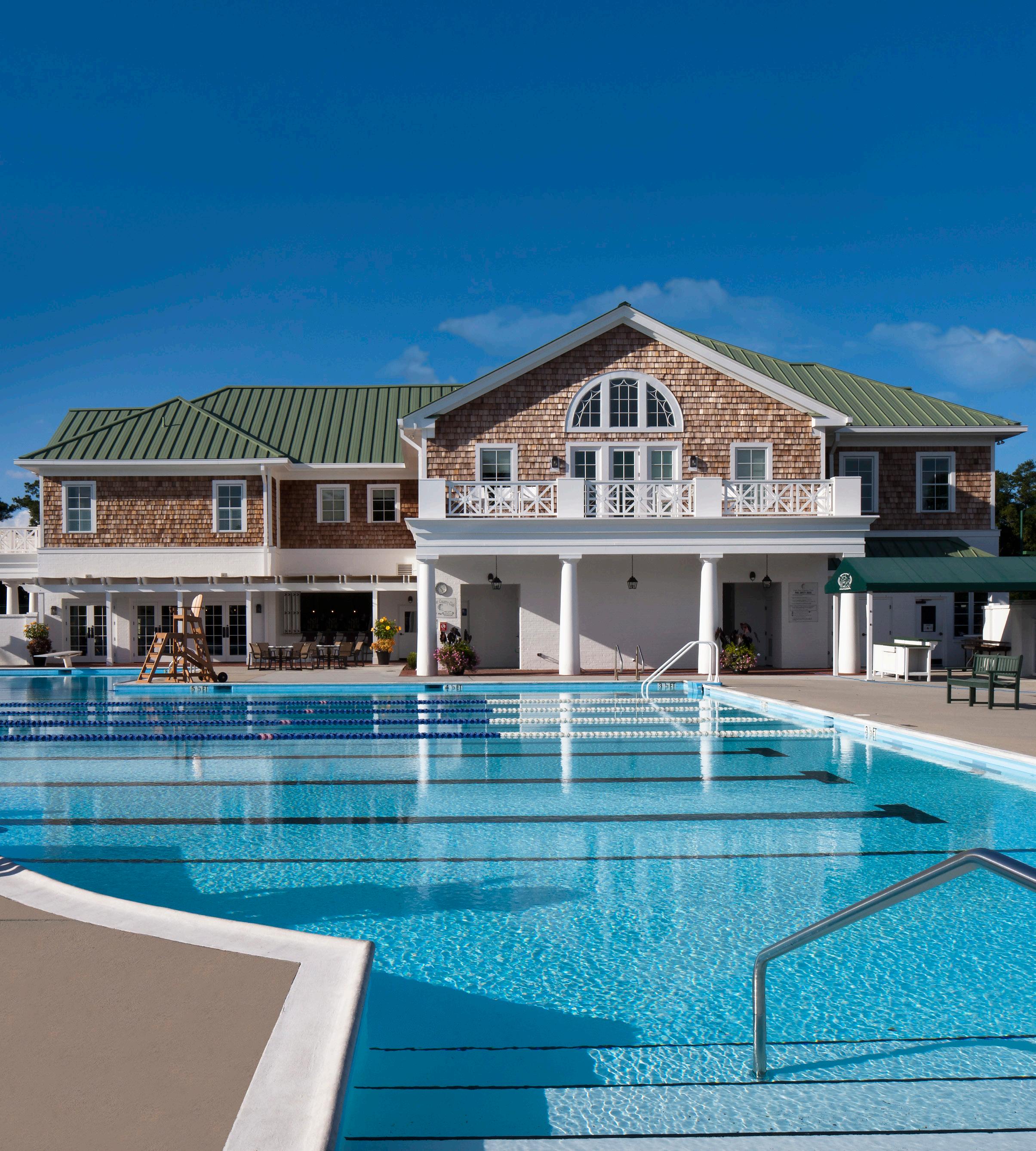
CHAMBERS ISSUE N O 14 • SPRING 2017 CLUB ROAD A Chambers Publication PLUS Behind the Curtain with Kathy Martin, Director of Purchasing p.12 p.4 Striking a Cape Fear Country Club’s Ambitious Renovations Appeal to All What’s Inside? 4 Sustainability Practices p.2 Designing for Diversity p.8 Planning on a Budget p.10 Members on the Move p.11 Family Activity Center Cape Fear Country Club Wilmington, North Carolina
Friends —
Spring has sprung and it’s hard to believe we are already three months into a new year! Time goes by faster than we anticipate, and private club leaders must be positioning themselves—and the clubs they love—for tomorrow.
In this issue, we address the balancing act that every club must face: If we consider what new and prospective members need, how can we ensure that more seasoned members aren’t left in the dust?
Being able to cater to as many as four generations in the same club is a challenging task, but certainly not impossible. Read more to discover how your club can strike this careful balance through thoughtful programming, intelligent planning, and purposeful design.
How does your club position itself for future success while remaining loyal to its more seasoned members? Let us know!
SUSTAINABILITY PRACTICES that



Boost the Bottom Line
Many industry professionals hold the misguided belief that sustainability efforts are a costly “all or nothing” initiative. For some, “sustainability” implies funneling club capital into fancy heating controls, NASA-grade air filtration systems, and pricey energy-efficient appliances. But you don’t have to explode your budget or go “off the grid” to be sustainable.
In fact, there are many simple, environmentally-friendly measures your Club can utilize to lower operational costs— and boost the bottom line!

OPTIMIZE LIGHTING
Rick Snellinger Bob Hickman
President & CEO Chairman of the Board
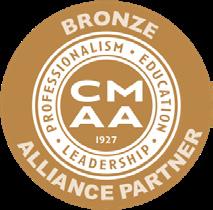

EMAIL
RICK EMAIL BOB

On average, lighting accounts for roughly 18% of typical utility costs. The best part about reevaluating the way you light your club is that you can spend as much or as little as you want and still help the bottom line. In recent years, energy efficient lighting has become much more sophisticated, providing a softer ambiance that goes far beyond the cold blue LEDs of yesteryear—but rethinking club lighting goes beyond fixtures. When it comes time to renovating certain spaces or build new ones, focus on designs that maximize natural light and diminish the need for artificial lighting during the day. Aside from saving a few dollars, incorporating more natural light into a space can boost mood, increase energy levels, lessen eye strain, and more!

FEATURED A NOTE FROM CHAMBERS CLUB ROUNDUP
CHAMBERS IS PROUD TO BE A CMAA CAP SPONSOR.
CHAMBERSUSA .COM 2 ] CONNECT: BALTIMORE / DALLAS / MINNEAPOLIS / DC
COOK LOCAL

Jumping on the farm-to-table trend isn’t just good for boosting F&B sales… it’s also a great way to go green! Offering local, seasonal produce lowers the amount of fuel used to ship the food and reduces the amount of energy that goes into processing, all while avoiding produce that has been subjected to pesticides. Some clubs use their extra property to create gardens and raise their own animals, such as bees and chickens. On-site gardens can also provide a value proposition outside of the F&B Department, creating possibilities for family events or activity groups. Don’t have space to spare for a garden? Check out your local farmer’s market, family farm, or community garden!
REDUCE WATER FLOW

Water usage at private clubs has been a hot topic in the industry, particularly among golf clubs. While using recycled water and smart irrigation tactics on the golf course can be a huge money saver, it also requires a large investment upfront. But not every water-saving tactic is pricey! Motion-detect faucets and low flow fixtures and toilets can conserve at a modest cost. Implementing water-saving strategies and fixtures can reduce a club’s water usage by up to a third— along with the utility bill that comes with it. The returns can be particularly impressive for clubs located in areas with chronic drought.
PREVENTATIVE MAINTENANCE

There are always reasons to put off things that should be done—routine maintenance being no exception. But inefficient facility maintenance and upkeep can be a killer for the environment AND your club’s capital funds. When your systems aren’t running efficiently, you’re unwittingly adding extra zeros to your operational costs. The solution? Develop a thoughtful maintenance plan that repairs system issues quickly. Conduct regular audits of the HVAC system and other operational components to ensure that they are performing at optimum levels. For more information about preventative maintenance practices, check out our article from Club Road Issue 13.
REMEMBER. The Club Managers Association of America (CMAA) offers many useful, in-depth resources like the Golf Sustainability Manual... and much more!


FEATURED CLUB ROAD Issue No 14 / Spring 2017 CLUB ROAD is a Chambers publication. Managing Editor / Creative Director: Lauren Gordon Copywriter: Jackie White clubroad@chambersusa.com 410.727.4535 2 Sustainability Practices to Boost the Bottom Line 4 Striking a Balance Cape Fear’s Renovations Appeal to All 8 Club Experience Designing for Diversity 10 Down to Business Planning on a Budget 11 Members on the Move Part I: Outdoor Activities Pack a Punch 12 Come Together Bringing Projects to Fruition BALTIMORE / DALLAS / MINNEAPOLIS / DC PLANNING • ARCHITECTURE INTERIOR DESIGN • PURCHASING CHAMBERSUSA .COM CLUB ROAD GET IN TOUCH! CLUBROAD@CHAMBERSUSA.COM / 410.727.4535
Striking a
NEVER FORGET WHERE YOU CAME FROM, BUT DON’T LET THAT STOP YOU FROM WHERE YOU ARE GOING.
Sound familiar? This aphorism addresses an age-old question that has plagued many private clubs over the years: How can we move into the future and embrace a new generation without abandoning our loyal, seasoned members?
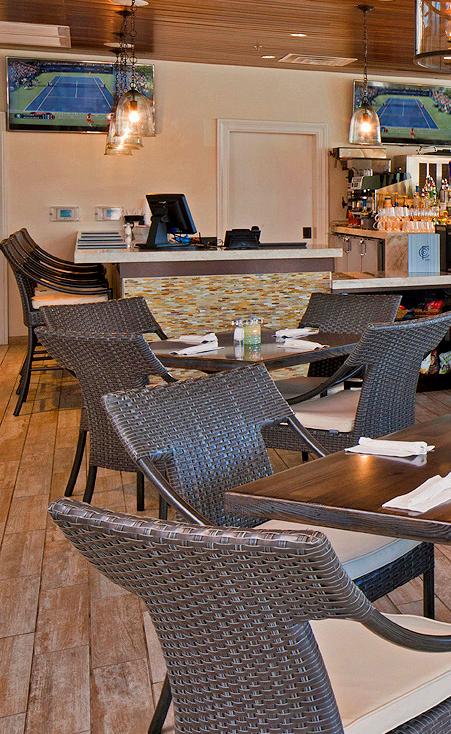
Without question, it’s important to consider what newer, younger members look for when joining a private club in order to remain competitive. “While we take everyone’s opinions into consideration during the planning process, we look keenly at members that have been at the club for less than five years because they’re the best indicators of what the next five years of incoming members will likely want and need,” says John Snellinger, Chambers’ Vice President and Director of Planning.
Listening to new members may be an essential part of positioning your club for future prosperity, but it’s also important to respect the opinions of seasoned members that have belonged to the club for many years. “Ultimately, it’s about finding a delicate balance between the trends that the new generation of members want and the traditions that more seasoned members have come to love during their time at the club,” says Snellinger.

CHAMBERSUSA .COM 4 ] / CLUBROAD ISSUE 14 / SPRING 2017
Turn the page or click here to read more >>
THE NEW CLUB DINING VENUES

HAVE INCREASED SALES BY 25-30% per month ... THE BAR
HAS ALREADY PAID FOR ITSELF.
— Mary Geiss, General Manager of Cape Fear Country Club, NC
CLUBROAD@CHAMBERSUSA.COM [ 5
Family Activity Center Cape Fear Country Club Wilmington, North Carolina
While no club can be all things to all people, it is important for clubs to satisfy a more diverse set of needs than they have in the past. Though the prospect may seem daunting (maybe even impossible), tackling this challenge head-on can pay off. “Offering a full suite of services allows clubs to appeal to a wide variety of people. The world has changed a lot in the last 10-15 years and, with the exception of a select few, most clubs in
CAPE FEAR ’ S GRAND PLANS
today’s market simply can’t afford to focus on golf alone,” says Snellinger. Providing amenities that appeal to everyone—from children to great grandparents—can capitalize on continuously expanding market potential without isolating long tenured members.
Of course, this approach sounds great in theory, but can it be executed successfully? WE’RE GLAD YOU ASKED…
Cape Fear Country Club, one of the oldest and most prestigious clubs in North Carolina, had to address this problem in a unique way. Known for its extensive history of legacy members, it was essential for the club to have up-to-date amenities that created a comprehensive experience with near-universal appeal.
“We started the Master Planning process in 2011 with the premise of incorporating more casual and outdoor dining, as well as a new fitness facility, which was an afterthought for our previous clubhouse. But through the process, we realized that we had inadequate pool, locker room, and tennis facilities, so we adapted our plans accordingly,” says Mary Geiss, Cape Fear’s General Manager. In response, Cape Fear’s forward thinking leadership worked with Chambers to develop a two-phase master planning program that addressed these concerns.
The first phase rebalanced the clubhouse dining facilities to minimize larger, formal venues and emphasize more appropriately-sized casual spaces. The plans created designated family casual and adult casual dining spaces, as well as a bar/lounge area that encouraged spontaneous socialization. An expansive outdoor dining
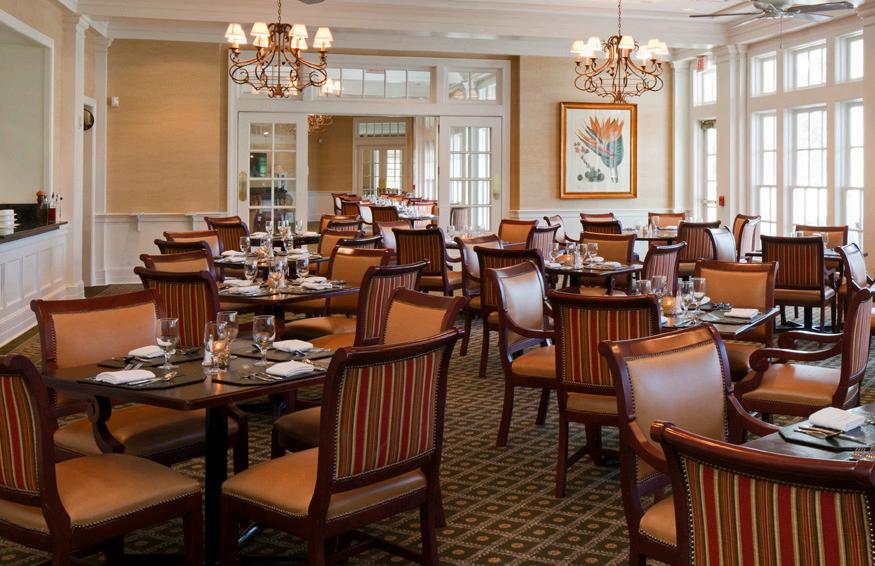
CHAMBERSUSA .COM 6 ] / CLUBROAD ISSUE 14 / SPRING 2017 FEATURED
FEATURED
DEVELOPING A MODEST PHASE ONE THAT GIVES YOU THE wind behind your sails TO BOOST
UTILIZATION IS A GREAT WAY TO CREATE EXCITEMENT.
— Rick Snellinger, Chambers’ President and CEO
area with outdoor kitchen, bar, and fire pit was also added to create a new dining option with stunning views of the 18th Green.
A lovely vine-twined trellis covers these outdoor spaces, allowing members to enjoy a close-up look at the course without worrying about the sun’s harsh rays. A new Wine Room was also developed to encourage the Club’s budding wine program, while also providing the opportunity for members to host private parties and enjoy a more formal dining experience.
The plan’s second phase focused on the creation of a Family Activity Center (FAC), which would replace the Club’s existing Swim and Tennis Facility. In essence, the FAC was designed to bring every membership demographic together. For families with children, the Youth and Multi-Purpose Rooms were enlarged, and a brand new Child Care Facility was created. A Café—which would serve
outdoor bar for adults, as well as a state-of-theart Fitness Center with group exercise rooms and a treatment room.

During the planning stages, some of CFCC’s more seasoned members were skeptical about how the FAC would benefit the Club. However, after the plan was approved by the membership, the initial work on the Clubhouse began to slowly build up anticipation for the creation of the FAC. “Everyone was excited about the new special touches, effort, and amenities that were put into the new clubhouse. It generated a great deal of excitement about the second phase,” says Geiss.
According to Rick Snellinger, President and CEO of Chambers, “developing a modest phase one that gives you the ‘wind behind your sails’ to boost utilization is a great way to use planning to create excitement. This increases revenue and helps pay for future phases, even though those revenues are not used in the development program costs.”
as an ultra-casual dining venue and snack bar— was built as an alternative to the more formal spaces in the main Clubhouse. This Café offers a plethora of healthy food options and boasts greater capabilities than the Swim and Tennis Facility’s original Snack Bar. The FAC also has an
After the planning & implementation stages, club leadership patiently awaited the results. How quickly would members—both new and old—embrace these new facilities?
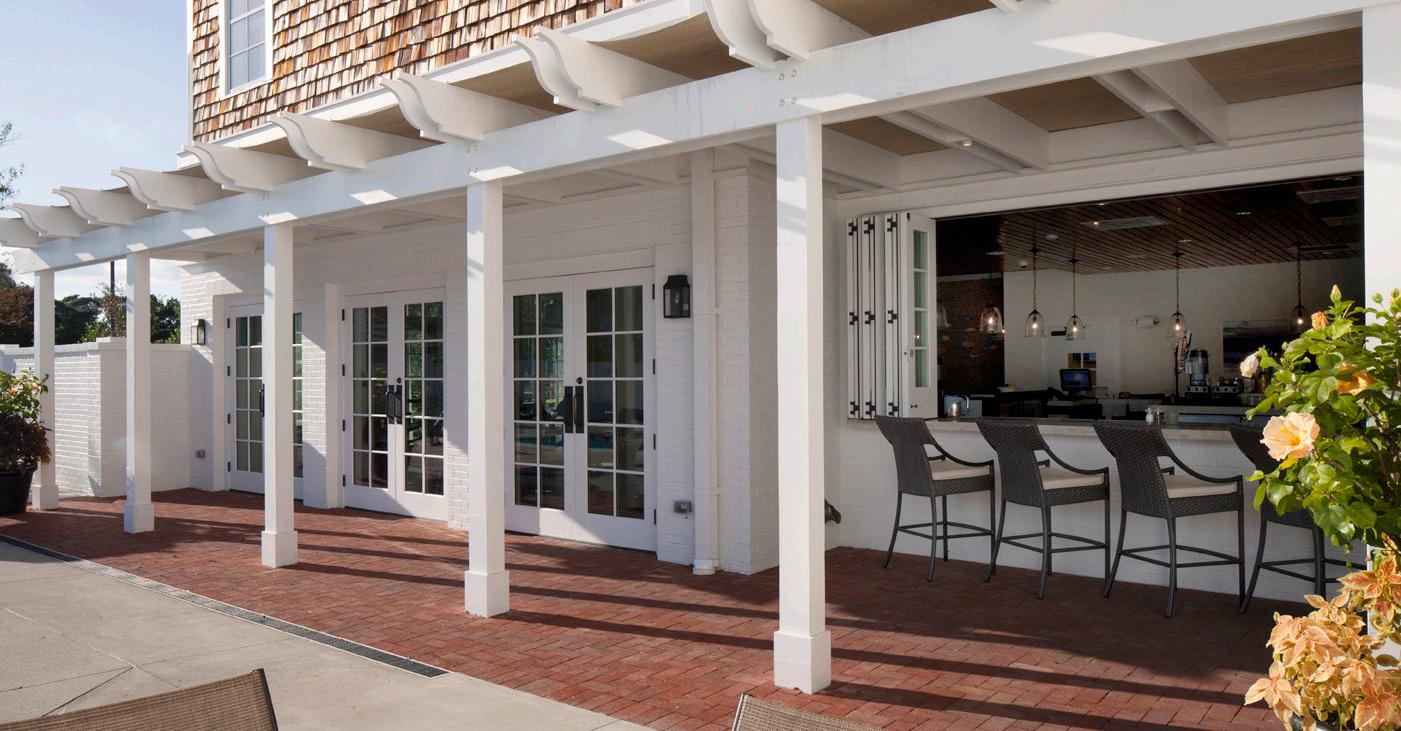
CLUBROAD@CHAMBERSUSA.COM [ 7 FEATURED Click here to visit the blog & read more!
Designing for

sity
CHAMBERSUSA .COM 8 ] / CLUBROAD ISSUE 14 / SPRING 2017 CLUB EXPERIENCE
South
Diver
Greenville Country Club Greenville
Carolina
Interior Design for an Enhanced Club Experience
The phrase “club interior design” often spurs a very distinct set of images in one’s mind: subdued colors, classic plaid patterns, dark woods, etc. In the past, this traditional style was pervasive among private clubs. But as the importance of enticing younger demographics increases to keep the dues flowing, clubs are beginning to look towards alternative styles for their interiors.
“Club design is far more stratified than it used to be. Many clubs are starting to become more exploratory in their interiors and embracing the idea of ‘transitional design,’ which isn’t a hundred percent traditional or contemporary,” says Chambers’ Vice President and Director of Interior Design Charlie Turner.
While it’s important to keep in mind that every club is different, in today’s market, few clubs can successfully don the more formal designs of yesteryear. Instead, clubs are embracing the kinds of interiors that today’s (and tomorrow’s) diverse memberships enjoy.
WANT TO FIND OUT MORE ABOUT THESE FORWARD-THINKING INTERIOR DESIGN CONSIDERATIONS FOR PRIVATE CLUBS?
Click here to visit our blog & read more!
Serve Multiple Purposes
As member interests become more varied, spaces designed for hyperspecific purposes become less practical. Instead, focus on flexible, multi-purpose spaces that promote constant usage.
Create a cOMMUNAL ATMOSphere
Many members not only join clubs to entertain their current friends, but also to form new bonds with people that have similar interests—a value proposition many clubs miss.
NOD TO THE PAST
Shake off the stuffy image sometimes associated with “classic” or “traditional” styles. Even historic clubs are moving towards more updated aesthetics, incorporating contemporary elements without leaving their history in the dust.
APPEAL TO EVERYONE
Though it sounds like an impossible task, the private club of tomorrow is a welcoming space for members from different generations, backgrounds and tastes. The key is finding a happy medium—these tips can help!
CLUBROAD@CHAMBERSUSA.COM [ 9
READ MORE ON THE BLOG >> READ MORE ON THE BLOG >> READ MORE ON THE BLOG >> READ MORE ON THE BLOG >>
THE ART OF PLANNING ON A BUDGET

Four Value-Driven Qualities to Search for in a Master Planning Firm
It is no surprise that selecting the right planning partner can make or break a club’s master planning process. You want facilities that wow current members, improvements that strengthen operations, and amenities that attract prospective members… all at a price point that suits your club’s budget.
While a master plan’s features are certainly important, the numbers that support the plan are usually what garner the most attention from members. Remaining within—and preferably well below—budget is essential, but it can also be one of the most difficult aspects of the planning process. “One of the greatest challenges any master planning company faces is providing a high level of value while remaining within budget,“ says Chambers’ Vice President and Director of Planning John Snellinger. “We want to give members exactly what they want without eclipsing the club’s financial restrictions.”
It may be challenging, but it’s definitely not impossible. There are qualities you can search for in your planning firm that will help you gain the most value from your plan—financially and otherwise.
1
Prioritize Carefully Identify the most important components and develop a realistic phasing plan.
2
Design Holistically Operations, design, capital planning, construction—they are all integral pieces of the puzzle!
3
Build Consensus Listen to members and communicate often! Transparency & empowerment are the keys to success.
4
Create Accountability The best way to stay true to the project budget, member needs, and the overall vision.
To maximize the benefits of the master planning process, a club’s ideal planning firm will… Click

CHAMBERSUSA .COM 10 ] / CLUBROAD ISSUE 14 / SPRING 2017 DOWN TO BUSINESS
on each benefit to learn more!
move
MEMBERS on the move
BUILDING Junior Programs THAT STAND THE TEST OF TIME

PART I: FREE-FORM OUTDOOR ACTIVITIES PACK A PUNCH


As the private club industry shifts toward familyoriented amenities, building an active youth program is becoming an invaluable feature. Still, creating these programs can be daunting. The ideal youth program is expected to entertain, provide educational value, foster a sense of community, and create positive memories that last a lifetime. Quite a tall order, to say the least!
TILLTHE EARTH

THEMUP
IN
THIS THREE PART SERIES,
we delve into the best practices for organizing a youth program that will delight kids and bring families together. In Part One, we consult industry experts to explore the benefits of free-form, natureoriented activities that will have kids begging their parents to go to the club! Click on each activity shown at right to learn more!
Find out what sets these activities apart !

CLUBROAD@CHAMBERSUSA.COM [ 11 SOCIAL REGISTER
Featuring insights from Andrea Curthoys and Three Carpenter.
CATCH THEMALL BUILD
TAKE A HIKE
COME TOGETHER
Bringing Interior Projects to Fruition
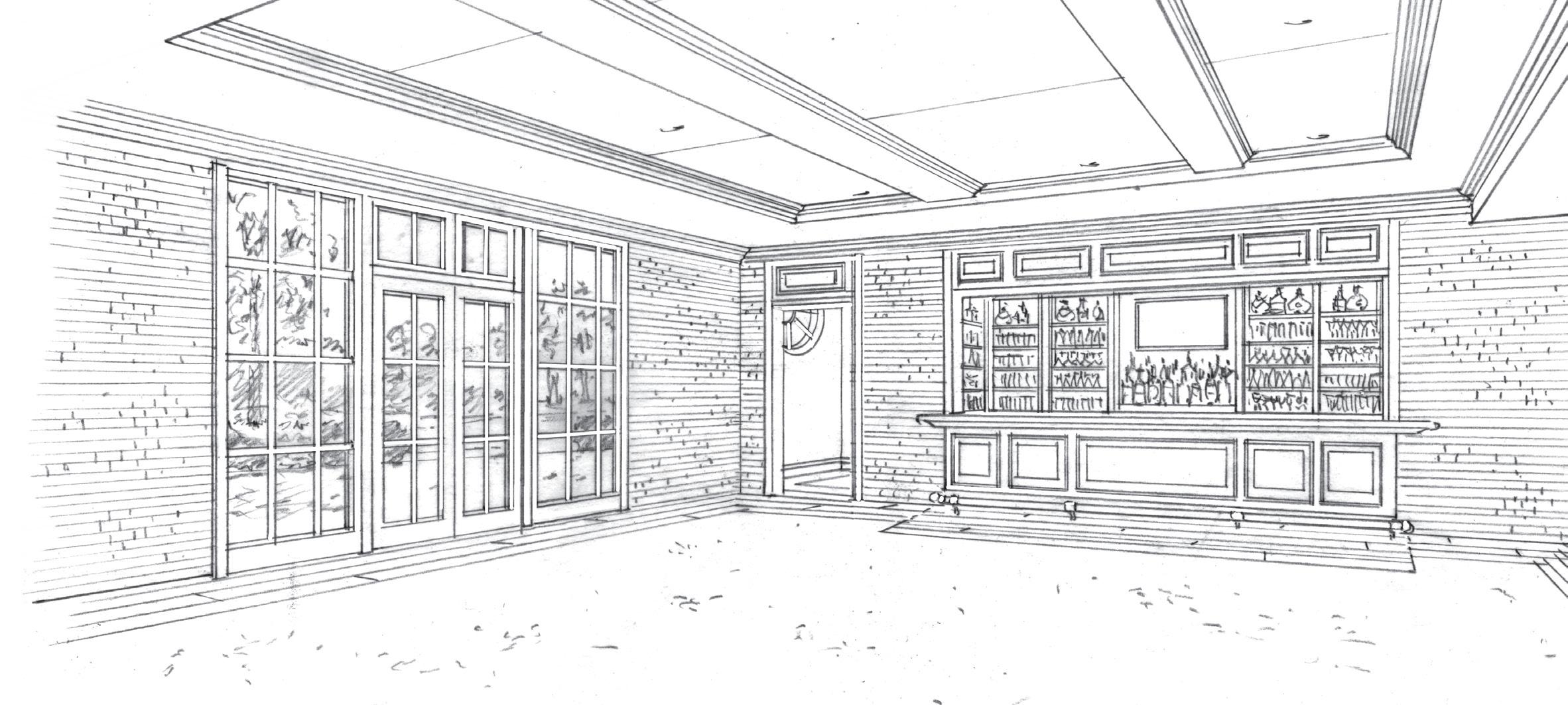
CR: Chambers is well known for its planning and design services, but some may be less familiar with its purchasing and installation services. What is your role in the design process?
KATHY MARTIN Director of Purchasing
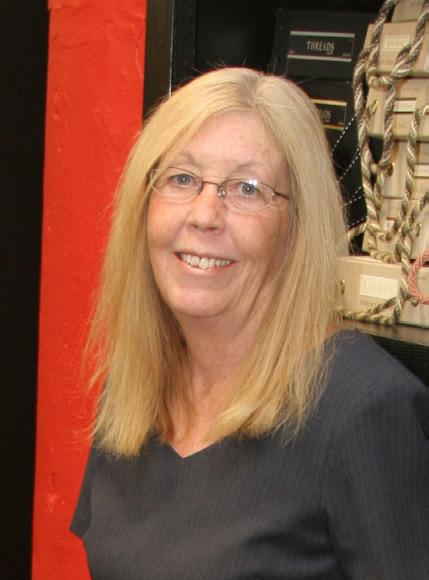
GET
IN TOUCH WITH KATHY!
kmartin@chambersusa.com

Director of Purchasing

Kathy Martin is practically a permanent fixture at Chambers. For over 20 years, Martin has been key to making projects come together exactly the way our designers and clients have envisioned. Though she largely works behind the scenes, she leads the charge when it comes to refreshing private club interiors on time and on budget. Here she divulges more about her beginnings at Chambers, as well as what purchasing and installation is all about.
KM: Purchasing at Chambers is a turnkey solution—we do a little bit of everything. We handle the logistics of the furnishings, price negotiations for each item, vendor relationships, and accounting. We make sure that all interior projects are executed on time and on budget. When I first started at Chambers... READ MORE >>
CR: Speaking of economics, how do you negotiate prices with vendors? Do you have a favorite negotiation tactic?
KM: Lucky for me, Chambers’ long history gives us a lot of leverage... We’ve been around for a long time—through good economic times and not-so-good economic times—and no matter what, we’ve always provided them with business. Those strong ties go a long way when it comes to negotiating... READ MORE >>
CR: You touch many aspects of the process. What’s your favorite part of the job?
KM: The installation process is my favorite part. I get to see the hundreds of thousands of purchasing orders we’ve been handling for months finally transform into a finished product. It’s amazing to see all the individual components come to life—it’s a lot like conducting a symphony in a way... READ MORE >>
CR: Is it satisfying to see a project finally come together?
KM: One hundred percent! Every piece of furniture has its own story of how it got to the point of installation, and that’s something that I get to enjoy on a personal level. As they say, the planners are the first in the door, but we’re the last ones out... READ MORE >>
HAVE QUESTIONS? NEED SOME GUIDANCE? Contact Kathy Martin to assist you through the process!

ISSUE 14 / SPRING 2017 BEHIND THE CURTAIN
CONNECT: BALTIMORE / DALLAS / MINNEAPOLIS / DC
































